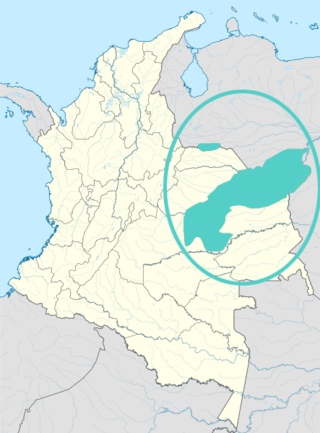|
Guahibo language
Guahibo, the native language of the Guahibo people, is a Guahiban language that is spoken by about 23,006 people in Colombia and additional 8,428 in Venezuela. There is a 40% rate of monolingualism, and a 45% literacy rate. GrammarStressGuahibo has a unique and complex stress system with both primary and secondary stress. The stress system shows a sensitivity to syllable weight so that heavy syllables are always stressed. Both contrasting trochaic and iambic patterns are found on morphemes in nonfinal morphemes with more than two syllables:
The binary feet are parsed from left to right within each morpheme. Morphemes with an odd number of syllables leave the final syllable unstressed (and unparsed into feet):
Morphemes that consist of two syllables and are also word-final are an exception to the above and only have the trochaic pattern:
These morphemes alternate with an iambic pattern when placed in a nonfinal context. Thus náwa keeps its trochaic pattern with the addition of a single light syllable morpheme like -ta "in":
However, an iambic word show its underlying iamb when it is followed by -ta:
Affixation generally does not affect the stress pattern of each morpheme. Heavy syllables since they are required to be stressed disrupt perfect trochaic and iambic rhythms. However, morphemes with a sequence of at least two light syllables show contrasting stress patterns:
Primary Stress. Primary stress generally falls on the rightmost nonfinal foot. For example, the following word
has primary stress on the rightmost foot (pa.lu) which is not word-final. However, the rightmost foot (qui.si) in
is word-final and cannot receive primary stress; the primary stress then falls on the next rightmost foot (tu.li). Placing a light syllable suffix -ta "with" after a four syllable root shows shifting of primary stress:
With the addition of the suffix, the root-final foot (ni.lu) is no longer word-final and is subsequently permitted to accept primary stress. Writing system
Phonology
A /w/ sound can also range to a [β] sound within words.
Sounds /a, e/ can have allophones of [ə, ɛ]. Vowels can also be nasalized as /ã, ĩ, ẽ, õ, ũ, ɨ̃/.[5] Bibliography
References
External links |
|||||||||||||||||||||||||||||||||||||||||||||||||||||||||||||||||||||||||||||||||||||||||||||||||||||||||||||||||||||||||||||||||||||||||||||||||||||||||||||||||||||||||||||||||||||||||||||||||||||||
Portal di Ensiklopedia Dunia
